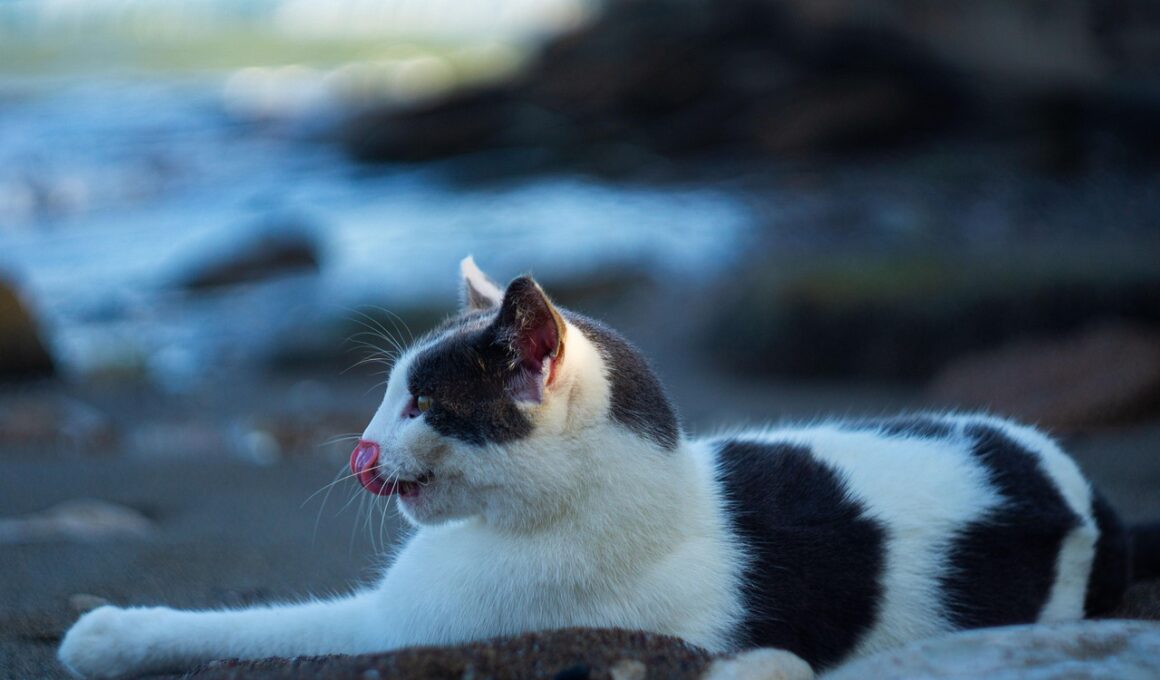How to Recognize and Manage Chronic Bronchitis in Cats
Feline bronchitis is a common respiratory condition affecting cats and often occurs due to a combination of environmental factors and underlying health issues. Understanding the subtle symptoms is crucial for timely diagnosis and management. Key signs to watch for include persistent coughing, wheezing, increased respiratory rate, and lethargy. Cats may also exhibit nasal discharge and frequent grooming to soothe their inflamed airways. Recognizing these signs early can lead to effective interventions, reducing the morbidity associated with this chronic condition. Routine veterinary visits are essential, especially for cats showing these symptoms. A thorough examination and diagnostic tests, such as X-rays or bronchoscopy, may be necessary to confirm chronic bronchitis and rule out other disorders. Treatment often includes long-term management strategies involving medications to alleviate symptoms and improve quality of life. Environment plays a critical role; ensuring a smoke-free and well-ventilated space can help minimize exacerbations of respiratory issues. Owners should focus on behaviors that help strengthen their cat’s lungs. Monitoring food intake, hydration levels, and stress factors can significantly contribute to managing chronic bronchitis effectively in affected felines.
Cats with chronic bronchitis need a supportive home environment to thrive. Closely observing your cat’s behavior is essential for managing their illness effectively. If your feline friend starts showing signs of distress, such as increased grooming or running away from social situations, it may be their way of expressing discomfort or anxiety. Keep them in a quiet, comfortable area away from loud noises or crowded spaces. Also, consider providing air filtration solutions that can reduce allergens and irritants in the air. In addition, the use of humidifiers can improve air quality, making it easier for your cat to breathe. Always consult with a veterinarian regarding the suitability of using such devices. Regular follow-up appointments can help in adjusting treatment plans or medications to better align with your cat’s evolving needs. Awareness of environmental triggers, such as dust or strong scents, allows for better management of the cat’s habitat. Furthermore, maintaining a balanced diet that supports overall health can enhance your cat’s resilience to respiratory issues and facilitate a smoother recovery process.
When managing chronic bronchitis, medication plays a significant role in alleviating symptoms and improving overall cat well-being. Treatment regimens often include bronchodilators and corticosteroids to alleviate inflammation in the airways. While bronchodilators work by relaxing the muscles around the airways, corticosteroids can effectively reduce inflammation and immune responses. It is essential to follow your veterinarian’s recommended dosages strictly to avoid potential side effects. Monitoring for adverse reactions is vital, as some cats may develop increased thirst or urination due to medication. Consider keeping a journal that tracks your cat’s symptoms and response to medication, helping the vet tailor a more effective treatment plan over time. Always discuss any new symptoms or worsening conditions with your veterinarian. Additionally, supplements like omega fatty acids may help reduce inflammation and improve lung function. The importance of a stable treatment plan cannot be overstated; stability encourages improved respiratory health and enhances the quality of life for your feline. Regular communication with your vet ensures you are adequately prepared to adjust strategies for optimal health outcomes.
Nutrition and Lifestyle Adjustments
Maintaining a suitable diet is critical for managing a cat’s chronic bronchitis. Foods high in antioxidants can support respiratory health and boost the immune system. Omega-3 fatty acids, found in fish oil, are beneficial for reducing inflammation and promoting lung function. It is advisable to consult your veterinarian for recommendations on appropriate diets or supplements. Consider incorporating nutritional sources that bolster omega-3 intake, such as flaxseed or specific commercial cat foods designed for respiratory support. Hydration is equally important, as it helps thin mucus secretions for easier breathing. Ensure clean, fresh water is always available and encourage your cat to drink regularly. Lifestyle adjustments play a vital role in reinforcing health as well. Engage your cat in low-impact activities that encourage mild physical exertion without overexertion. Such practices can enhance lung capacity and general well-being. Monitor reaction to different activities; as every cat responds uniquely to various levels of exertion. Gradually introduce play sessions that suit your cat’s comfort level and health status, ensuring they remain stimulated and content throughout their daily life.
Regular veterinary visits prove crucial not only for managing chronic bronchitis but also for preventing complications that could worsen your cat’s condition. Biannual wellness checks can assist in monitoring your cat’s respiratory health and allowing for timely interventions if needed. During these visits, your veterinarian may conduct diagnostic tests and assessments of your cat’s lung function, contributing to a comprehensive understanding of their health status. Any changes in breathing patterns or discomfort should always prompt a visit to the vet. It is essential to remain proactive! Vaccinations against common respiratory diseases can also be part of a good preventative strategy. Your veterinarian will be able to advise on the necessary vaccination schedules tailored to your cat’s specific needs. Selling vaccinations and discussing any concerns can significantly impact your cat’s long-term health. It can positively influence responses to therapy and can help minimize flare-ups of chronic conditions. Beyond clinical visits, observe any fluctuations in your cat’s behavior, activity, or overall demeanor between appointments, as changes may signal the need to reassess treatment and management strategies.
Recognizing Emergency Signs
It is vital to recognize emergency signs related to respiratory distress in cats diagnosed with chronic bronchitis. Severe breathing difficulties, excessive wheezing, or blue-tinged gums are urgent indicators demanding immediate veterinary attention. Cats may also exhibit rapid or labored breathing, even at rest, which significantly raises concern. If your cat is resorting to stretching their neck out while breathing or demonstrating unusual postures, these signals warrant swift action. A sudden loss of appetite or significant changes in energy levels can also indicate possible complications. During these moments, remain calm, and prepare your cat for emergency transport while minimizing their stress. Ensuring your cat has an accessible carrier that is comfortable and familiar can facilitate smoother transfers in emergencies. Additionally, if emergencies arise, having an emergency contact list with local veterinary hospitals and emergency clinics improves preparedness and responsiveness. Always seek professional help as cats cannot communicate discomfort effectively. A timely response can save your cat’s life and help pinpoint treatment strategies for chronic bronchitis, reinforcing proactive management for long-term health stability.
Ultimately, managing chronic bronchitis in cats requires a comprehensive approach, addressing medical, environmental, and lifestyle factors. Collaboration with your veterinarian forms the cornerstone of an effective management plan tailored for your feline friend’s specific needs. Consistently follow guidelines, understand medication regimens, and remain vigilant of symptoms to detect any changes. In addition to regular vet appointments, embrace good home hygiene, ensuring a dust-free and tranquil environment for your cat. Environmental controls and nutritional support help improve their resilience, potentially reducing the frequency of flare-ups. Enhance engagement by providing a stimulating yet soothing home environment. Lastly, provide emotional support through gentle interaction and companionship, as the bond between you and your cat can have a positive impact on their overall health and behavioral outlook. Chronic bronchitis may be a challenging condition, but with appropriate care and commitment, many cats can lead happy, active lives. Ultimately, your diligence and observance can significantly improve the quality of life for your cat living with chronic bronchitis, fostering a fulfilling journey together.



